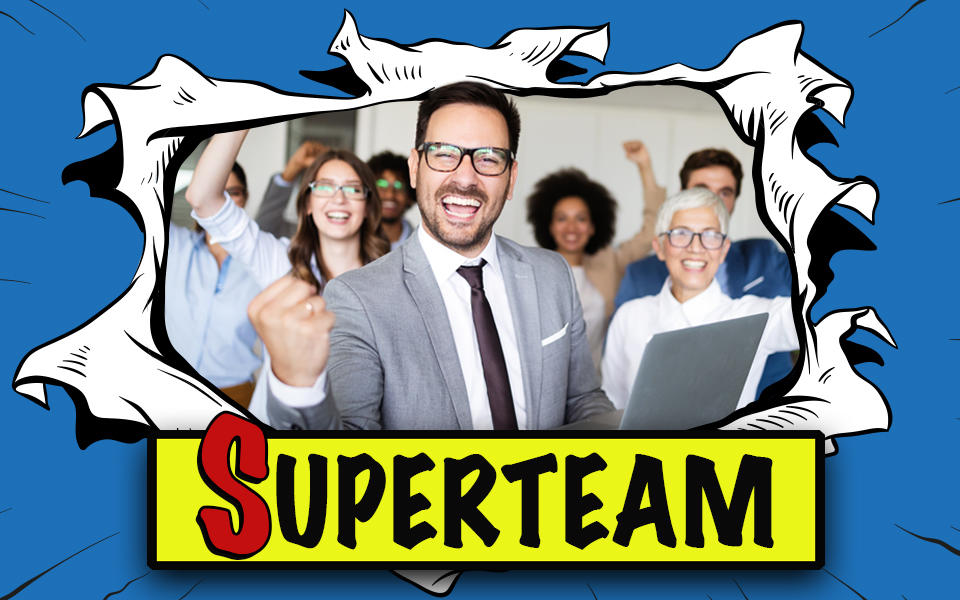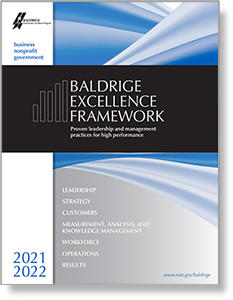Blogrige
The Official Baldrige Blog

The famous British naturalist Charles Darwin once said, “It is not the strongest or the most intelligent that survive, but those who can best manage change.” If you shared this quote at your next team meeting, many colleagues would likely nod in agreement. They understand that an organization’s ability to continuously improve their results and remain competitive requires adaptability.
Nonetheless, for some business leaders, it may feel like it takes a heroic effort to win their employees’ acceptance of change. In those situations, why is change seemingly villainized? In an article reprinted in Harvard Business Review (HRB), Paul Strebel states:
“Top-level managers see change as an opportunity to strengthen the business by aligning operations with strategy, to take on new professional challenges and risks, and to advance their careers. For many employees, however, including middle managers, change is neither sought after nor welcomed. It is disruptive and intrusive. It upsets the balance.”
What’s at Stake When You Stagnate?
Driving effective organizational change is a critical factor in a team’s agility, resilience, success, and ability to innovate—interrelated qualities that are often embedded in role-model organizations. Consider these two Baldrige core values and concepts:
Agility and Resilience: Agility requires a capacity for rapid change and for flexibility in operations. Organizational resilience is the ability to anticipate, prepare for, and recover from disasters, emergencies, and other disruptions, and—when disruptions occur—to protect and enhance workforce and customer engagement, supply-network and financial performance, organizational productivity, and community well-being.
Success and Innovation: Ensuring your organization’s success now and in the future requires understanding the short- and longer-term factors that affect your organization and its environment. It also requires the ability to drive organizational innovation. Innovation means making meaningful change to improve your products, services, programs, processes, operations, and business model, with the purpose of creating new value for stakeholders.
For more detailed explanations of these (and other) core values and concepts, see a Baldrige Excellence Framework® booklet.
I think a hero is an ordinary individual who finds strength to persevere and endure in spite of overwhelming obstacles.
– Christopher Reeve, the late actor who played Superman in the movie and its first three sequels
How Can You Gain Buy-In for Organizational Change?
The following insights from Baldrige Award winners may help you engage and empower your team to be participants in improvement—or, as I like to think of it, heroes for change!
1. Leverage the Baldrige Criteria to develop a common language around process improvement.
In the words of Tim Tuter, executive director for The Charter School of San Diego (a two-time Baldrige Award winner, 2015 and 2021):
"One of the most unexpected outcomes of applying the Baldrige Criteria to our school has been the development of a common language within the entire workforce around process improvement. This common language has helped us shape a very positive workforce environment and contributed to very high levels of workforce engagement compared to top industry performance. Winning the Baldrige Award has helped reinforce a very strong culture among the stakeholders of our school."
2. Design a strategic planning process that’s inclusive, responsive, and transparent.
Dr. Bob Meyer, former chancellor of the University of Wisconsin–Stout (a 2001 Baldrige Award winner), shares how the Baldrige framework guided UW-Stout’s journey to excellence:
"Pursuing the Baldrige Award encouraged us to refine our strategic planning process and create a process that’s inclusive, responsive, and transparent. By inclusive I mean that it’s designed to engage a broad group of stakeholders to gather ideas on how to look at a future vision for the institution and what continuous-improvement items we need to tackle next. It’s responsive in that if it’s done right, then you should have a plan that is responsive to or reflective of the input you’ve collected and responsive to the needs that were suggested. And it’s transparent from the point of view that we have constant communications. We’ve developed our communication systems that support the planning process, so everyone knows what’s going on and everyone’s aware of it."
3. Prioritize people and culture to build trust and collaboration inside your team and drive results in key areas.
John Heer, Jr., winner of the Baldrige Foundation's 2016 Harry S. Hertz Leadership Award—and the only person to have led three organizations to receive Malcolm Baldrige National Quality Awards—explains:
"Culture … is who you are, how you behave, your relationships. … A servant culture is a servant leader, servant-led employees, a servant environment designed to ensure that employees’ highest-priority needs are being met, with character that inspires confidence."
Heer also expands upon the characteristics of servant leadership: "humility, patience, guidance, respect, selflessness, forgiveness, honesty, commitment, results-oriented, a no-excuses environment, no egos, team accomplishments."
Without trust we don’t truly collaborate; we coordinate or at best, cooperate. It is trust that transforms a group of people into a team.
– Stephen Covey, best-selling author of The 7 Habits of Highly Effective People and other books
4. Establish a sense of urgency, and focus on results.
Joseph (Joe) Brescia, former director for strategic management and process improvement for the U.S. Army Armament Research, Development and Engineering Center (a 2007 Baldrige Award winner), details how to do so:
"Establish a sense of urgency: The Baldrige Excellence Framework is a vehicle for establishing and maintaining transformational change in your organization. The responsibility of great leaders is to align the mission, vision, and values within the organization. Paint the vision of what change looks like and how the Baldrige framework gets you there.
Make sure you focus on results: In other words, the way to institutionalize the Baldrige framework is to actually use it to manage the business. That comes down to establishing a formal venue for senior leadership to review results and make changes as required. This way, when you have changes in leadership, with the venue institutionalized, it doesn’t live and die with the leadership that started it."

Baldrige Excellence Framework
The Baldrige Excellence Framework has empowered organizations to accomplish their missions, improve results, and become more competitive. It includes the Criteria for Performance Excellence, core values and concepts, and guidelines for evaluating your processes and results.
Purchase your copy today!
Available versions: Business/Nonprofit, Education, and Health Care





